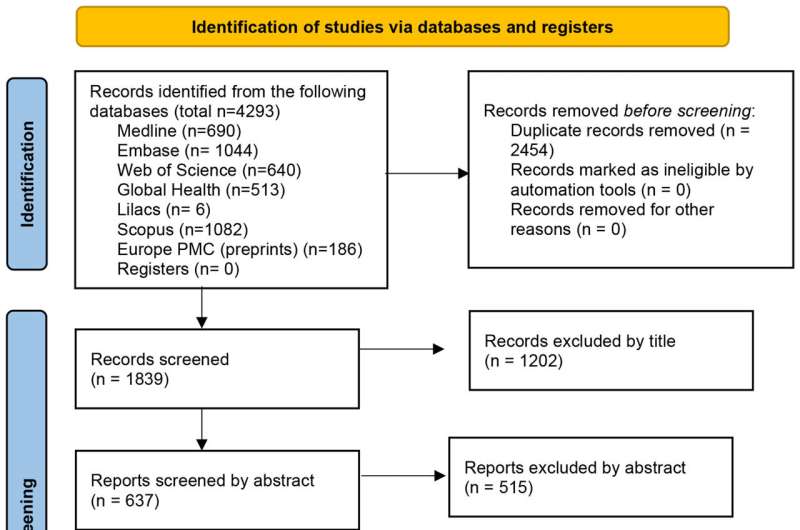This article has been reviewed according to Science X's editorial process and policies. Editors have highlighted the following attributes while ensuring the content's credibility:
fact-checked
trusted source
proofread
Prevalence of malaria infections found to vary among migrant populations

The prevalence of malaria infections among migrants from sub-Saharan Africa is considerably high (8%), while Asian and Latin American migrants have a much lower prevalence, according to a study by the Barcelona Institute for Global Health (ISGlobal). These findings can help inform screening strategies to combat malaria infections in migrant populations.
Malaria is often thought of as a tropical disease, but a systematic review led by ISGlobal has shed light on a lesser-known aspect of this mosquito-borne disease: its prevalence among migrants in non-endemic areas.
Migrant populations currently make up 10% of the total population in EU countries and many of them come from malaria-endemic regions. However, as ISGlobal researcher Ana Requena notes, "screening of migrants arriving in European countries is not usually done, so we do not know the true percentage of those infected with the malaria parasite, especially since many of the infections can be asymptomatic."
To estimate the prevalence of malaria parasites in this population, Requena and her team searched several databases for studies conducted in Europe, USA, Canada, Australia or New Zealand where migrants had been systematically screened for malaria parasites. The researchers excluded studies in which people were tested because of malaria symptoms, as their aim was to capture asymptomatic infections.
Of the 1,819 studies initially identified, the review included 23 studies that met the criteria, with a total of 4,203 participants tested with PCR, 3,186 with microscopy, and 4,698 with rapid diagnostic tests (RDTs).
Regional variations
The prevalence of the malaria parasite varied widely between migrant groups. Sub-Saharan African migrants had the highest prevalence, with 8.3% testing positive by PCR, 4.3% by RDTs and 3.1% by microscopy. Prevalence was highest among those from Central Africa (9.3% by PCR) and those who had arrived in their host country within the last year (11.6% by PCR).
In contrast, malaria parasite prevalence was much lower among Asian and Latin American migrants (0% and 0.4%, respectively, by PCR).
Not surprisingly, parasite prevalence based on PCR (which is much more sensitive) was two to three times higher than that detected by RDT or microscopy.
These findings can help inform screening strategies and guidelines for malaria control in migrant populations. "By identifying at-risk populations, health authorities can better tailor interventions to prevent and treat malaria in these communities, ultimately contributing to global efforts to eliminate this devastating disease," says Requena.
The paper is published in the journal Clinical Microbiology and Infection.
More information: Ana Requena-Méndez et al, Malaria parasite prevalence among migrants: a systematic review and meta-analysis, Clinical Microbiology and Infection (2023). DOI: 10.1016/j.cmi.2023.09.010




















